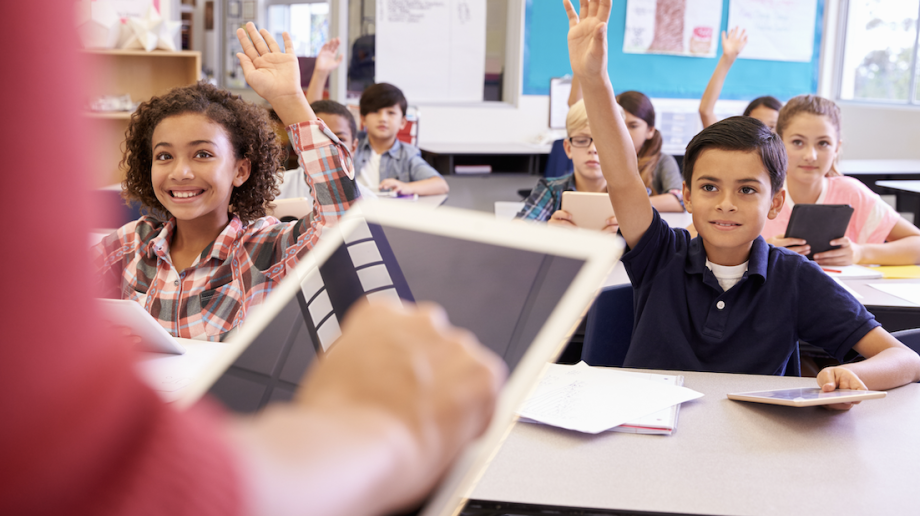
The role of edtech in pandemic recovery
How much can edtech help with pandemic recovery, from both an academic and wellbeing perspective? Lord Jim Knight of Weymouth, a former minister for schools digital and employment and a member of the Bett Global Education Council, investigates
There is widespread concern that many children, especially from more disadvantaged families, have fallen behind in their learning during the pandemic. The government have given additional money to schools to help but many question whether it is enough.
A recent survey for the Bett Show by TeacherTapp showed that teachers feared the learning gap blown upon by the pandemic would take 18 months or more to close.
The funding for schools to close this gap is for tutoring, staff development, summer schools and for social and emotional support. In amongst this mix, it is a fair question to ask how much can edtech help with pandemic recovery?
Last May, the Department for Education published a research report on EdTech. Their survey of 900 headteachers found that almost two-thirds had introduced, increased or upgraded technology in part because of COVID. The requirement for remote learning has massively pushed schools along the edtech adoption curve.
Is all that tech just being used to keep some schooling going during lockdowns or can it be used for recovery?
At the beginning of summer term last year the NFER interviewed fifty senior leaders in mainstream schools serving deprived neighbourhoods to understand schools’ responses to COVID. The response was clear and, as chair of a multi-academy trust serving similar communities, it still resonates today.
The NFER found that most schools had changed their curriculum and pedagogy to help them recover numeracy and literacy; that pupils’ wellbeing and mental health is an immediate and pressing concern; pupils’ emotional and academic readiness for transition has been impacted; and that the most urgent need right now is help with pupil wellbeing.
No mention of technology
The implications are clear that education recovery must start with pupil wellbeing. Whilst there is widespread concern that many children have fallen behind academically, many need to first be feel healthy and safe if they are then able to focus on extra time and effort on academic learning.
How does that sit with the rise of edtech during the pandemic?
A tech sceptic would point to the correlation between the rise of remote learning and the increase in mental health problems in children. They would want a swift return to a tech-free normal. Of course, it is indeed true that too much time spent isolated at home, and only interacting socially and educationally online, will be damaging.
On the other hand, most teachers have seen the benefits of edtech in aspects of their work.
Who would go back to the old way of doing parents evenings now they have tried School Cloud? As a parent I would hate to lose the engagement with my child’s class teacher that we now get through ClassDojo. I no longer see the point of teacher spending their May half term writing annual reports when we get feedback all year in real time.
In January last year there were over 600,000 downloads of Google Classroom in the UK. This more dynamic and interactive way of managing homework is surely here to stay. I am a board member at Century-Tech were we also saw huge adoption of the platform that allows learners to progress through Maths, Science and English at a pace, and on a learning journey, that is personalised for them. Teachers then love the feedback they get back to inform where and when they need to intervene.
All of this points to the possibility of us now being able to embed the use of technology within the working lives of teachers to free up time for more of the human-to-human job that is at the heart of the profession. By implication that means that if teachers need to spend more time than previously on the emotional support of some their pupils, then technology can free them up to do so.
Whilst there is undoubtedly a bunch of technology products out there that add little value, there are plenty that do. For any school leader worrying about education recovery the challenge is to then know what works and in what circumstances.
This sense, that school leaders are behind the curve on this, is reflected in the DfE Edtech survey that revealed that out of the 897 schools questioned 58% didn’t appear to have an active edtech strategy in place. The picture is worst in primary, local authority schools, and rural areas.
The survey is also revealing in that teachers were most comfortable with software supporting remote teaching and learning, and much less so independent online learning.
This reflects an understandable truth. Without leadership to the contrary, teachers will inevitably replicate existing pedagogy rather than reflect on what the new technology could allow them to do differently.
As a result, the pandemic has seen most trying to replicate in-person pedagogy online with their remote teaching. This is best exemplified by the Oak National Academy.
Using a technique developed for face-to-face teaching will always be lessened when used for remote teaching. By contrast, maximising the opportunity to individualise interactive learning online creates possibilities that are impossible teaching a class of thirty in the traditional way.
School leaders need to develop a strategy with a vision for technology at its heart. I recently listened to Sir Anthony Seldon on a LearnIt podcast being asked about this very issue by Jenny Anderson.
Sir Anthony is very thoughtful on mental health and wellbeing. His starting point is that the human matters. “If we do not live in the real world of human relationships…there is no life”. But he also sees the need to shape the incoming technology of Artificial Intelligence (AI).
He sees that AI “allows an outstanding teacher, and marker and assessor for every child, that personalises itself upon them” and allows a lot of the “heavy lifting” of teaching to be done at home, after hours and in the holidays. Learning at times that best suit the learner rather than the teacher.
Sir Anthony then sees the technology freeing up “so much of the school day for social activity: for sports, the arts, for debating, for teamwork, creative work and volunteering work.”
This is a vision that would use technology to transform the place-based activity of school into a deeply human experience with wellbeing at its core. The essential elements of academic learning are than as likely to be delivered using technology and in a much more flexible individualised way.
This is an exciting vision for our schools to use when recovering from this pandemic.
Start your schools on a journey where they become institutions designed for wellbeing. They should be places that maximise social interaction and offer a range of learning activity that is more human and applied. Teachers should be freed up by technology to focus more on these precious human interactions.
The role of the technology is then to deliver instruction, impact knowledge, give feedback to learners and teachers, to match individual learners with the most relevant learning content, and continuously assess the success of the learning. It must also take away much of the burdens of feedback to parents, of marking, of manual data inputting and trawling through endless sources of teaching resources to find the perfect fit for your learner in your class in your context.
We are on the cusp of an exciting change in education. The pandemic has both highlighted the unfairness of our current model and accelerated the adoption of tools that can move us to make a better future. We should grasp that opportunity.
Lord Jim Knight is a member of the Bett Global Education Council and will appear at Bett 2022, the edtech show, on 23-25 March at London’s ExCeL. He is a director of Suklaa Ltd and a former minister for schools digital and employment.
Latest News
08/01/2026 - 10:30
The government is launching a new app allowing students to view their GCSE results on their phones for the first time from this summer.
08/01/2026 - 09:45
Education Business LIVE has announced that Professor Samantha Twiselton OBE of Sheffield Hallam University will speak at the event in March 2026, delivering two thought-provoking sessions focused on initial teacher training and SEND provision.
07/01/2026 - 10:10
Solve for Tomorrow is a free, curriculum-linked programme which is mapped to Gatsby Benchmarks 4, 5, and 6, helping teachers embed careers education without adding to workload.
06/01/2026 - 10:24
London's universal free school meals programme has not led to improvements in pupil attainment during its first year, but has eased financial pressure and reduced stress for families.
05/01/2026 - 10:44
New regulations have come into force from today, banning adverts for unhealthy food and drinks before 9pm, and online at all times.







